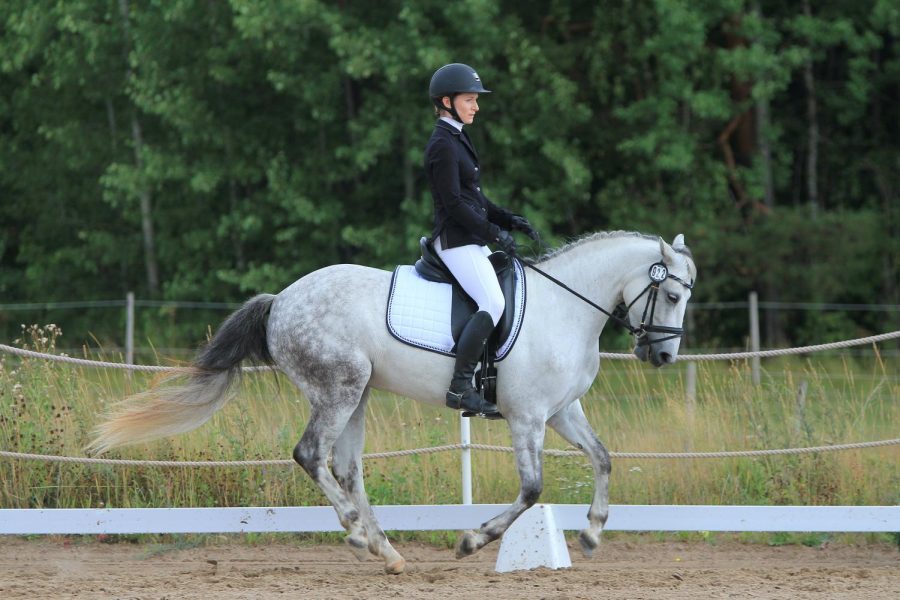What is Dressage?
May 26, 2022
When you think of equestrian sports, dressage may not be the first that comes to mind. But out of the many kinds of horse riding sports, this dancing sport requires the highest degree of precision and coordination between horse and rider to complete various movements.
Originating in Athenian culture since 350 BC, the word “dressage” has evolved from the French verb dresseur, which means “to train”. It has since earned a spot in the Summer Olympics of 1921 and enjoyed much international popularity at the Grand Prix musical freestyle, where movements are performed to music at the highest level.
The sport centers around training a horse to dance fluidly and diligently to almost imperceptible signals from its rider, which can take years upon years of training to achieve. Unlike other dance sports like ballet or gymnastics, the rider is unable to communicate verbally during training and must rely on their weight, legs, and hands to send signals instead. Through training, a horse will ideally build an understanding of basic cues from their rider and be able to add more layers of complexity in routines. Not only that, but a rider must train their horse to perform three walking styles, or gaits, which are: a four beat walk with no moment of suspension, a two-beat trot with suspension between each diagonal beat, and a three-beat canter with suspension following the third beat.
A dressage test will take place in a rectangular arena 20 meters by 60 meters in area, but some smaller competitions will use smaller arenas. For the test, separate movements must flow from one to the next with each movement being marked on a scale of 0 to 10. A score of 0 indicates no movement was performed, with 5 being sufficient, and 10 being excellent. Some of these movements include speed changes within each gate, while other movements require the horse to sit or use their hind legs to maintain balance while moving in a direction. The panel of dressage judges will then offer four general impression scores for performance, which are added to other points and divided by the total possible score to find the percentage score of the test.
The levels of competition in which you can compete dressage each have their respective movement sets. Top competitions, like the Olympics, feature the best pairs to choreograph a grand prix freestyle programme along to music of the rider’s choosing.
There has been much controversy on whether the discipline in training dressage horses is a cruel practice, especially in higher, more demanding competitions. Devices and practices like nosebands, shock collars, spurs, and Rollkur can have damaging effects on the mental and physical health of the horse. Research by scientists in Ireland and Australia found that restrictive nosebands, which are often used to keep a horse’s mouth closed and keep the bridle in place, are shown to cause both physical injury and psychological stress. However, some training methods are not permitted by the International Federation for Equestrian Sports if they end up compromising the health of the horse. In fact, proper dressage training can have many benefits for horses, including but not limited to better coordination, increased strength, increased suppleness, increased balance, and greater focus.
Whether you see dressage as an elegant art form or blatant animal cruelty, the truth is that although there is no one right way to motivate a horse to perform well, there are many wrong ways to train a horse. No matter what level of discipline you do, training and treating your horse with love should always be your top priority.
Photo Courtesy by UNSPLASH.COM

